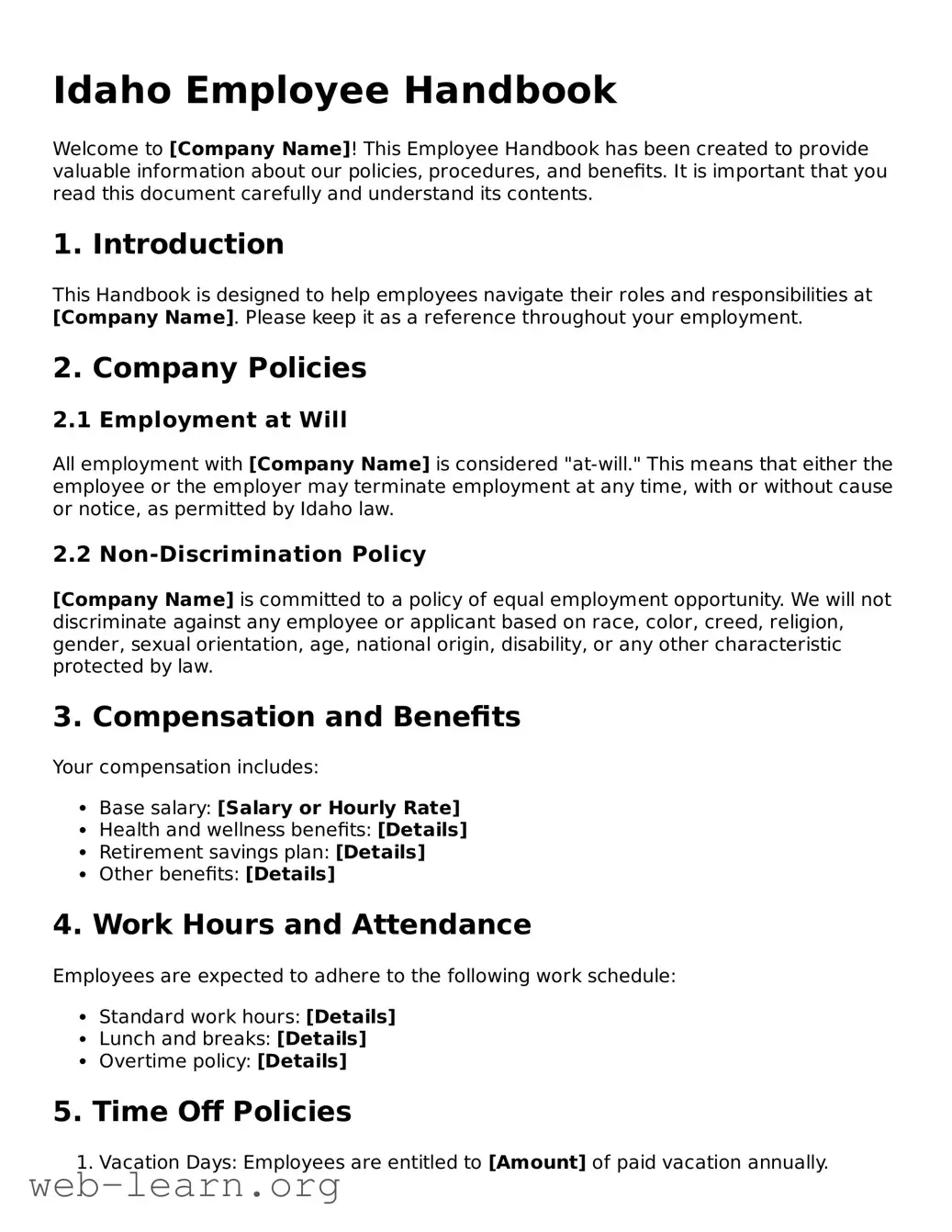Idaho Employee Handbook
Welcome to [Company Name]! This Employee Handbook has been created to provide valuable information about our policies, procedures, and benefits. It is important that you read this document carefully and understand its contents.
1. Introduction
This Handbook is designed to help employees navigate their roles and responsibilities at [Company Name]. Please keep it as a reference throughout your employment.
2. Company Policies
2.1 Employment at Will
All employment with [Company Name] is considered "at-will." This means that either the employee or the employer may terminate employment at any time, with or without cause or notice, as permitted by Idaho law.
2.2 Non-Discrimination Policy
[Company Name] is committed to a policy of equal employment opportunity. We will not discriminate against any employee or applicant based on race, color, creed, religion, gender, sexual orientation, age, national origin, disability, or any other characteristic protected by law.
3. Compensation and Benefits
Your compensation includes:
- Base salary: [Salary or Hourly Rate]
- Health and wellness benefits: [Details]
- Retirement savings plan: [Details]
- Other benefits: [Details]
4. Work Hours and Attendance
Employees are expected to adhere to the following work schedule:
- Standard work hours: [Details]
- Lunch and breaks: [Details]
- Overtime policy: [Details]
5. Time Off Policies
- Vacation Days: Employees are entitled to [Amount] of paid vacation annually.
- Sick Leave: Employees may take up to [Amount] of sick leave per year.
- Holidays: The company recognizes the following holidays: [List of Holidays].
6. Guidelines for Conduct
To maintain a professional work environment, employees are expected to:
- Show respect to all colleagues.
- Dress appropriately for the workplace.
- Communicate effectively and professionally.
7. Safety and Health
We prioritize the safety and well-being of all employees. Report any safety concerns or incidents immediately to a supervisor.
8. Acknowledgment of Receipt
I acknowledge that I have received and read the [Company Name] Employee Handbook and understand its contents.
Employee Name: [Employee Name]
Employee Signature: [Signature]
Date: [Date]
